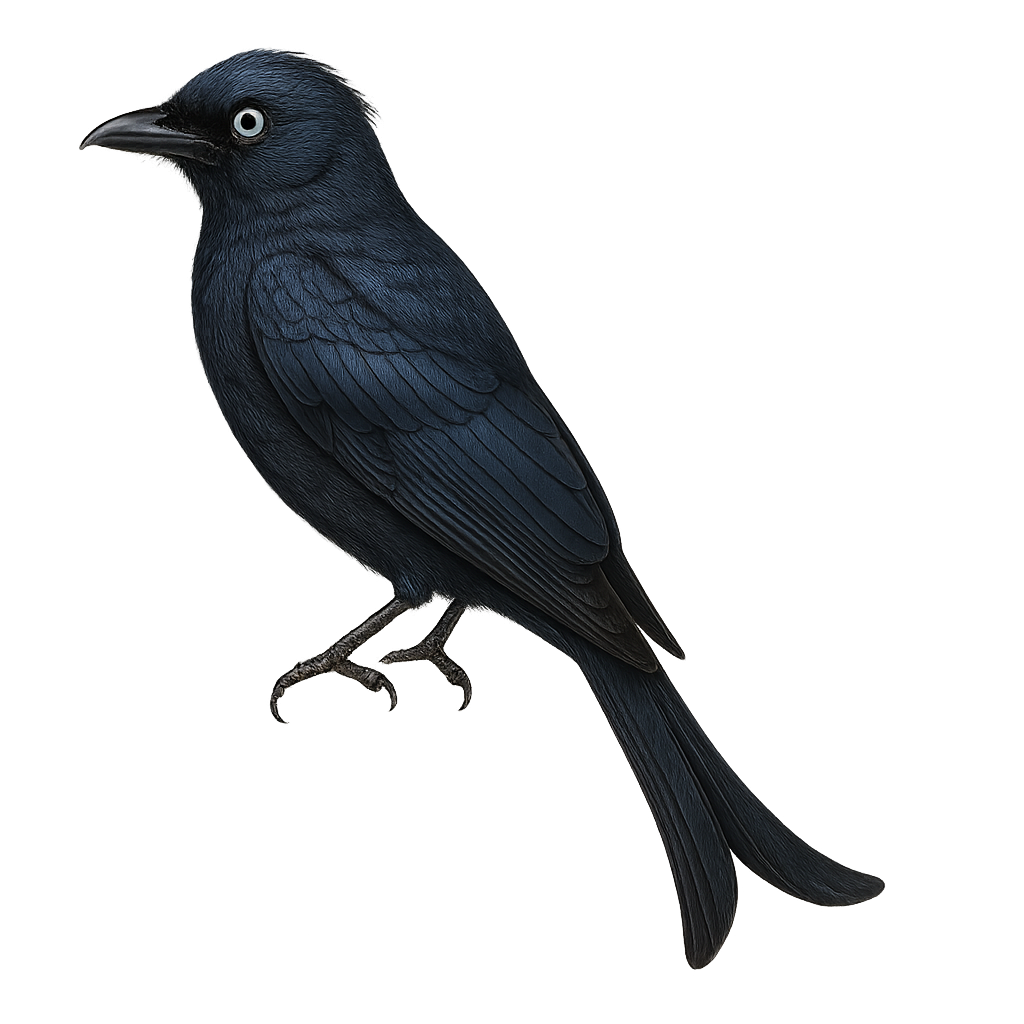Your wildlife photography guide.
Explore the nicobar drongo in detail, study its behavior, prepare your shots.
Where to observe and photograph the nicobar drongo in the wild
Learn where and when to spot the nicobar drongo in the wild, how to identify the species based on distinctive features, and what natural environments it inhabits. The WildlifePhotographer app offers tailored photography tips that reflect the nicobar drongo’s behavior, helping you capture better wildlife images. Explore the full species profile for key information including description, habitat, active periods, and approach techniques.
Nicobar Drongo
Scientific name: Dicrurus fuscipennis

IUCN Status: Least Concern
Family: DICRURIDAE
Group: Birds
Sensitivity to human approach: Suspicious
Minimum approach distance: 10 m
Courtship display: October to December
Incubation: 15-17 jours
Hatchings: October to January
Habitat:
Tropical rainforests, mangroves
Activity period :
Primarily active during the day, with peak activity in the morning and late afternoon.
Identification and description:
The Nicobar Drongo, scientifically known as Dicrurus fuscipennis, is a medium-sized bird endemic to the Nicobar Islands in the Indian Ocean. It is characterized by its glossy black plumage and long forked tail. This bird primarily inhabits the tropical rainforests of these islands, where it feeds on insects and small invertebrates. The Nicobar Drongo is known for its territorial behavior and its ability to mimic the sounds of other birds, which helps it deceive predators and protect its territory. Although its habitat is limited, it is not currently considered threatened, but deforestation could pose a long-term risk.
Recommended lens:
400 mm – adjust based on distance, desired framing (portrait or habitat), and approach conditions.
Photography tips:
To photograph the Nicobar Drongo, it is advisable to use a telephoto lens of at least 400mm to capture sharp images from a distance. Since this bird is suspicious, it is best to maintain a safe distance of about 10 meters to avoid disturbing it. The tropical rainforests where it resides offer filtered light, so adjust your ISO accordingly to achieve good exposure. Be patient and wait for the bird to perch on an open branch to get a clear shot of its glossy plumage and distinctive tail.
The WildlifePhotographer App is coming soon!
Be the first to explore the best nature spots, track rutting seasons, log your observations, and observe more wildlife.
Already 1 430 wildlife lovers subscribed worldwide

